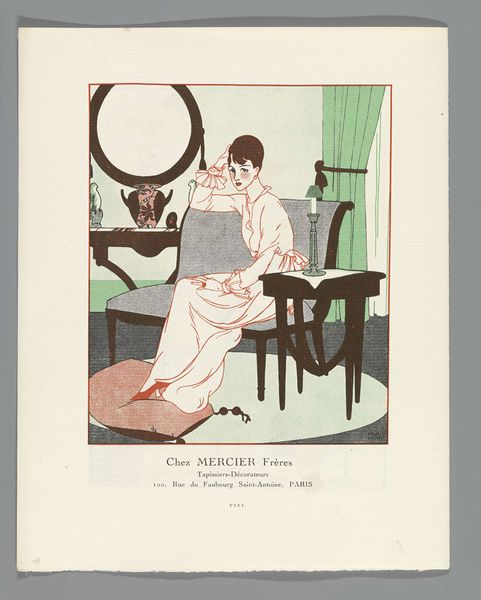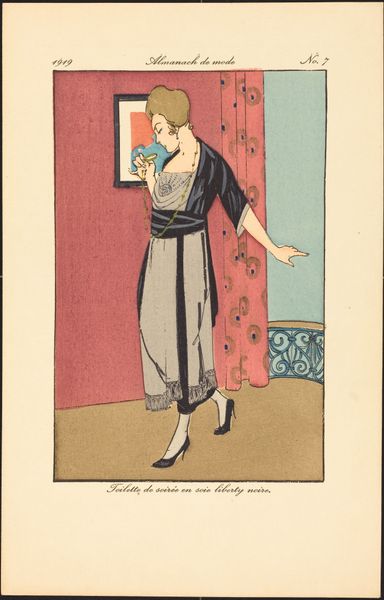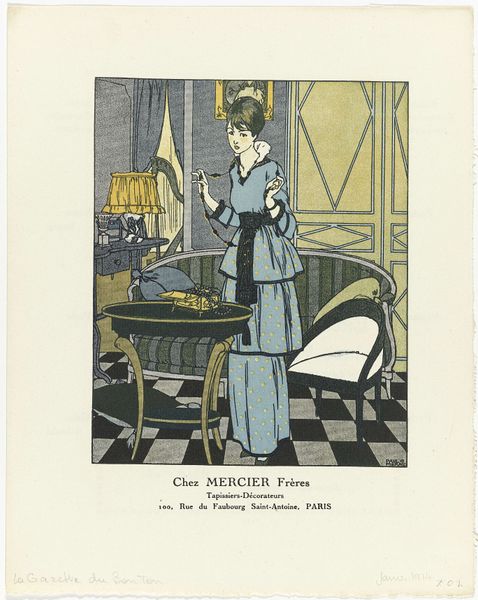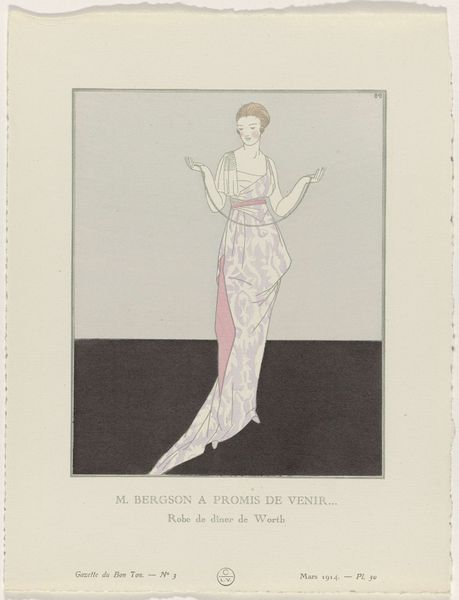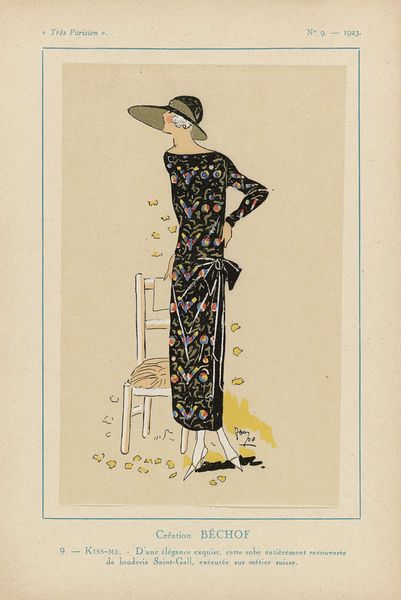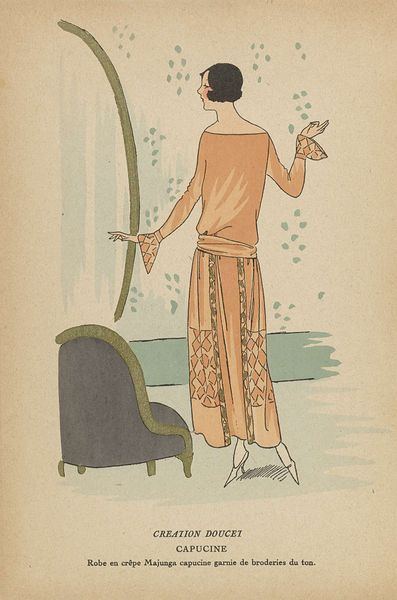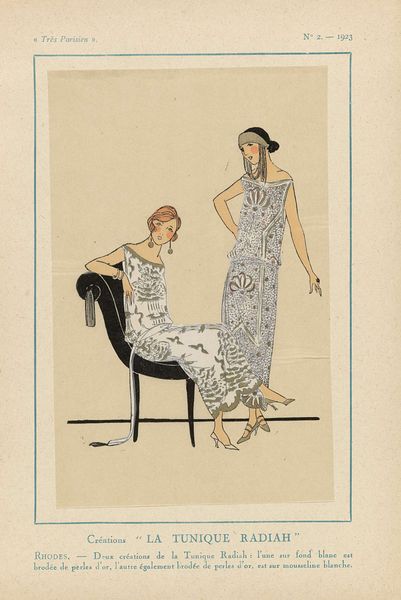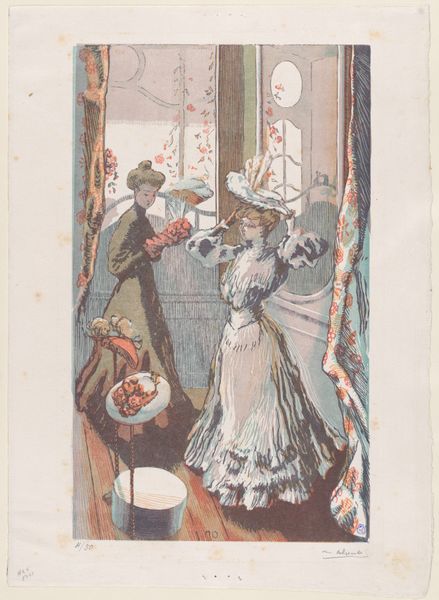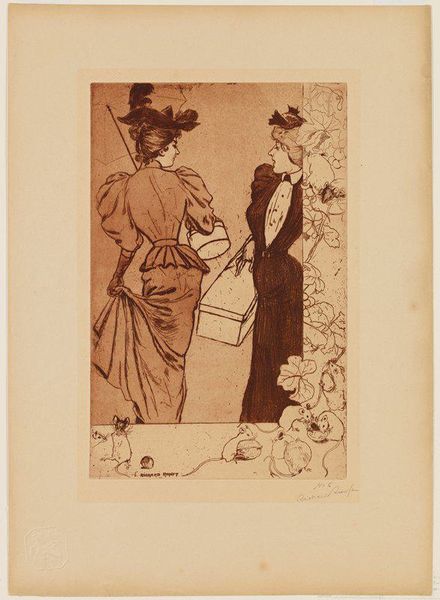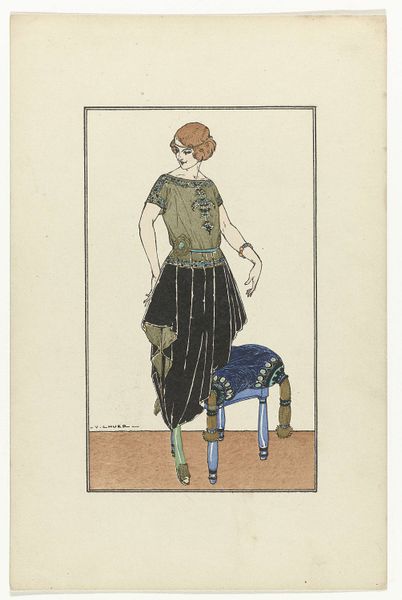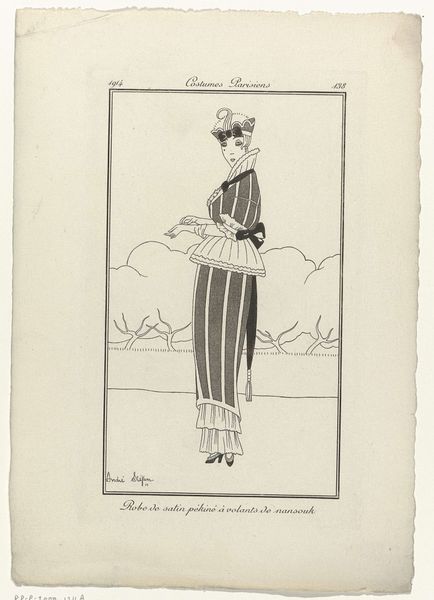
Gazette du Bon Ton, 1914 - No. 6, p. XII: Advertentie Chez Mercier Frères, Tapissiers-Décorateurs, Paris 1914
0:00
0:00
print, poster
#
portrait
#
art-nouveau
# print
#
poster
Dimensions: height 245 mm, width 381 mm
Copyright: Rijks Museum: Open Domain
Curator: Immediately, I’m drawn to the texture, even on a digital reproduction. The way the artist has handled what appears to be color printmaking is quite beautiful, particularly the fabric folds on the central figure's dress. Editor: Let’s take a closer look. This print, entitled "Gazette du Bon Ton, 1914," showcases an advertisement for Mercier Frères, a Parisian tapestry and decorating firm. What I find striking is how it embodies a specific cultural moment in Paris, just before the outbreak of World War I. Curator: The Art Nouveau influences are undeniable, particularly in the sinuous lines of the furniture and the decorative elements. It’s clear the production and printing processes themselves – the physical labor – would have been intensive to get this layered effect. There's an implicit tension between its intended function as advertising and its aspiration towards “high art.” How did these advertising images function as a reflection of wider visual culture? Editor: That’s precisely the historical tension I'm interested in! Periodicals such as the "Gazette du Bon Ton" played a key role in disseminating taste and projecting Parisian style. Advertisements, like this one, functioned not merely as calls to purchase but as curated expressions of a lifestyle. We're not simply selling furniture; we’re selling access to the exclusive world represented in this print. Curator: Looking again at this, I am reminded of textiles and upholstery, not only because that is what the company offers, but because you can feel it. The furniture seems to speak of its materials and techniques, as the company obviously saw labor as craftsmanship that aligned itself with the tastes of Parisian society. Editor: Indeed, notice how the advertisement avoids portraying the Mercier Frères workshop itself. The image presented to the viewer emphasizes the final product placed in a domestic setting; the labor involved is effectively concealed behind a veneer of refined taste and style. I am curious: in what ways does its presentation challenge traditional hierarchies between ‘high art’ and commercial production? Curator: Well, looking at the lines that articulate material as much as it describes its form, the labor involved might actually blur boundaries between craft and art here. And in its mass-production, we are seeing art in a new type of consumable culture that art could influence. Editor: Absolutely, and in this way, the piece tells us something about the role of these printed publications in constructing social status and in the role of commerce and its impact in Parisian society in the early twentieth century. Curator: Seeing it within this historical perspective deepens our appreciation for its nuances, going far beyond simple appreciation of form. Editor: Precisely; it also adds to my interest as a historian to understand this kind of artistic production in defining Parisian and French identities on the world stage, by establishing criteria and aesthetics for cultural consumers.
Comments
No comments
Be the first to comment and join the conversation on the ultimate creative platform.
